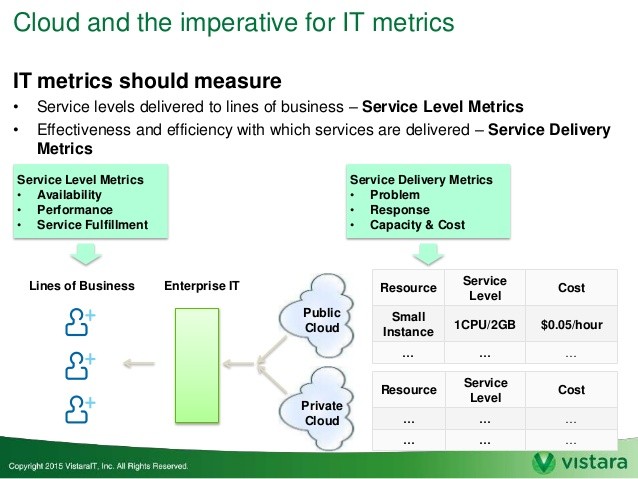IT Metrics And Successful Measurement
Post on: 16 Март, 2015 No Comment

ITSM Watch Staff
One of the primary reasons measurement programs fail is because measurement is often done for the sake of measurement itself, and not tied to critical business drivers. In order to successfully measure service efficiency and effectiveness, IT organizations must ensure measurement activities are value-based.
Achieving value-based measurement and continuous improvement of technology services requires an IT organization to implement activities based on what they want to accomplish, not on what they want to measure. As understood and promoted by the ITIL framework and ITSM in general, the primary accomplishment of IT should be the effective alignment of services with the current and future needs of the business and its customers.
Therefore, from the standpoint of value and accomplishment, following are some key attributes that should be considered during the plan-do-check-act lifecycle of IT metrics management:
- Vision: The future state of any measurement program should be clearly outlined, specifically identifying the people, processes and technologies that are required to support the future state vision.
Assess: Evaluate the current state of any existing measurement system and understand how best-in-class organizations implement these systems. Activities that are not value-based should be stopped immediately.
Staffing: IT measurement is primarily built around people with clear roles and responsibilities to ensure accountability and efficiency. Obtaining formal commitment from senior management on support staff is critical to the success of any measurement program.
Documentation: Measurement goals, objectives, milestones and underlying activities should be formalized to ensure sponsorship and continuity. Just like the core IT service support and delivery processes, the IT measurement process should also be captured and documented.
Communication: Communication is required for measurement sustainability and ensures the entire organization understands and supports the program. More specifically, it is important to identify and maintain communication with those individuals that create value through use of the resultant performance measures.
Consistency: The core building blocks of measurement should be established with consistency in order to minimize measurement costs. Specific metrics should be developed, captured, measured, reported and reviewed in a consistent fashion, supported by standard procedures, processes and policies.
Control: With the advent of IT governance, Sarbanes-Oxley and other legislative requirements, metrics and measurement should be monitored for completeness, accuracy, validity and appropriate authorization prior to commencement of any related activities.

Prototype: A prototype or proof-of-concept measurement project may be a key activity in demonstrating value to the business. In turn, measurement activities can be bootstrapped and evolve with the maturing knowledge and support provided by the stakeholders.
Prioritize: Any measurement results should be used as an input for prioritizing the service improvement program portfolio. Just as individual metrics themselves need to be evaluated for value, improvement projects based on measurement findings need to be cost-justified and prioritized based their inherent value to the business.
Reporting: The true audience of a measurement program is the business leadership. Measurement results need to be rationalized, rolled-up and reported in a non-technical format, on a consistent basis and to the appropriate business audience in order to add real business value.
Keep in mind that mapping a specific metric back to a business objective does not necessarily validate its value or the effort involved in establishing and maintaining measurement activities. Investment in IT measurement is justified only when IT metrics are established collectively, based on value and drive accomplishment.
Bottom Line: In the end, IT measures must have context to have meaning; the appropriate context is derived by deciding which investments in measurement will actually provide business value. Adding value requires taking action and establishing clear goals and expectations, based on value-based measurement attributes. The success of any measurement program will be dictated by how effectively management aligns and leverages the people, processes and technologies that enable the vision.
Matt Evans is the Managing Director for ProcessWorx LLC. Mr. Evans holds a Masters degree in MIS and has extensive experience as an Information Technology professional specializing in IT service management, process improvement and legislative compliance.
Please enable Javascript in your browser, before you post the comment! Now Javascript is disabled.














